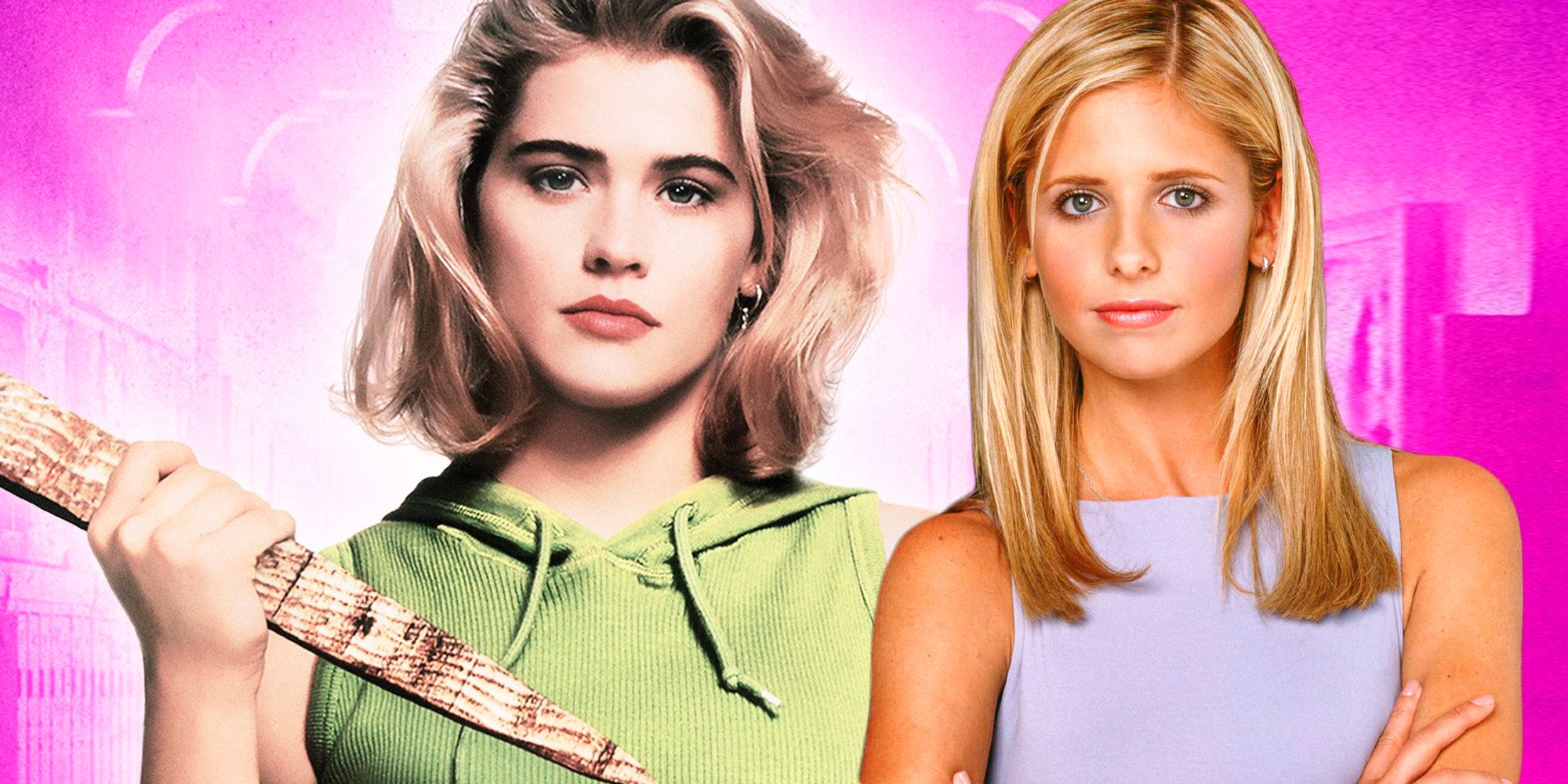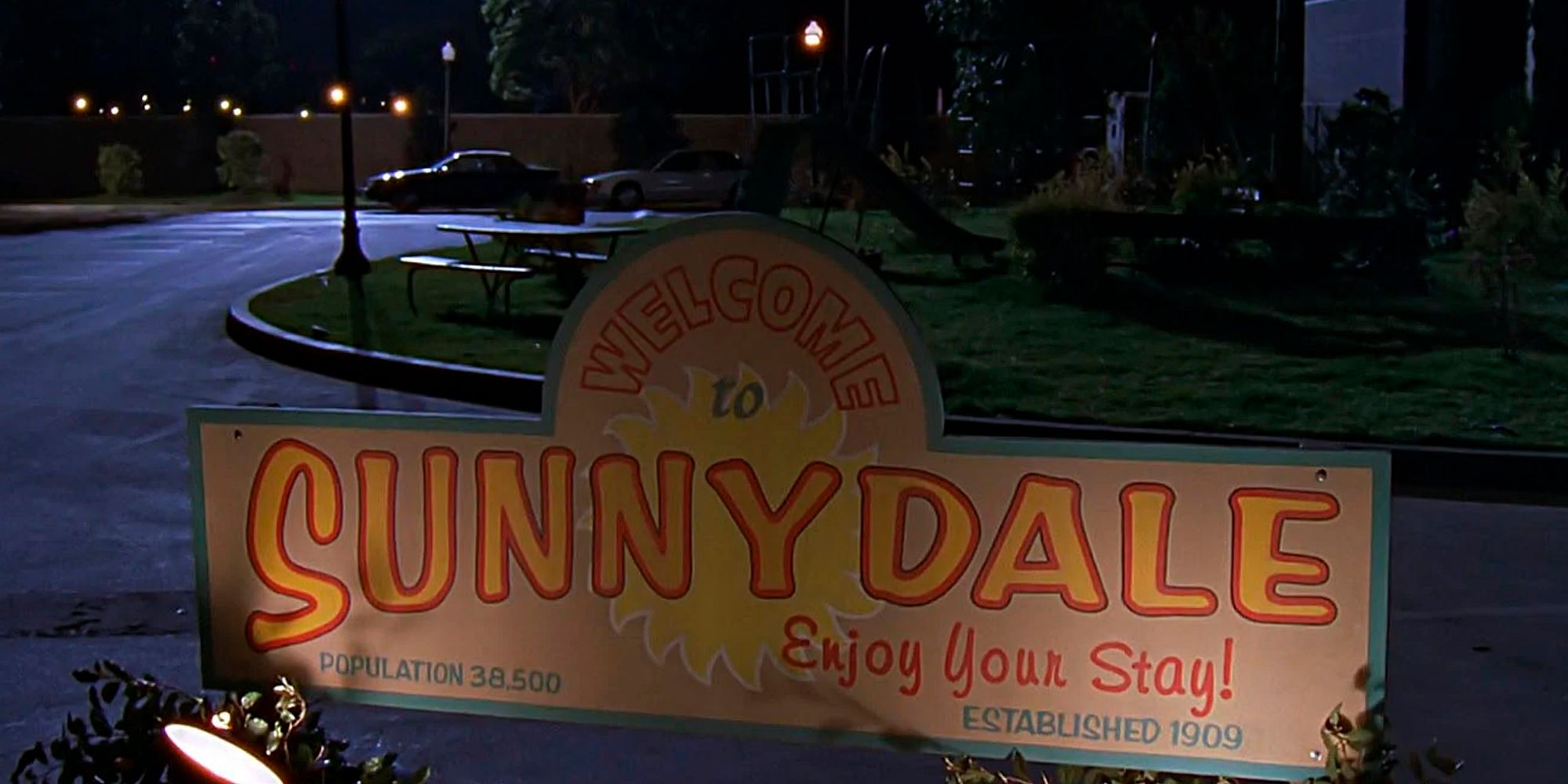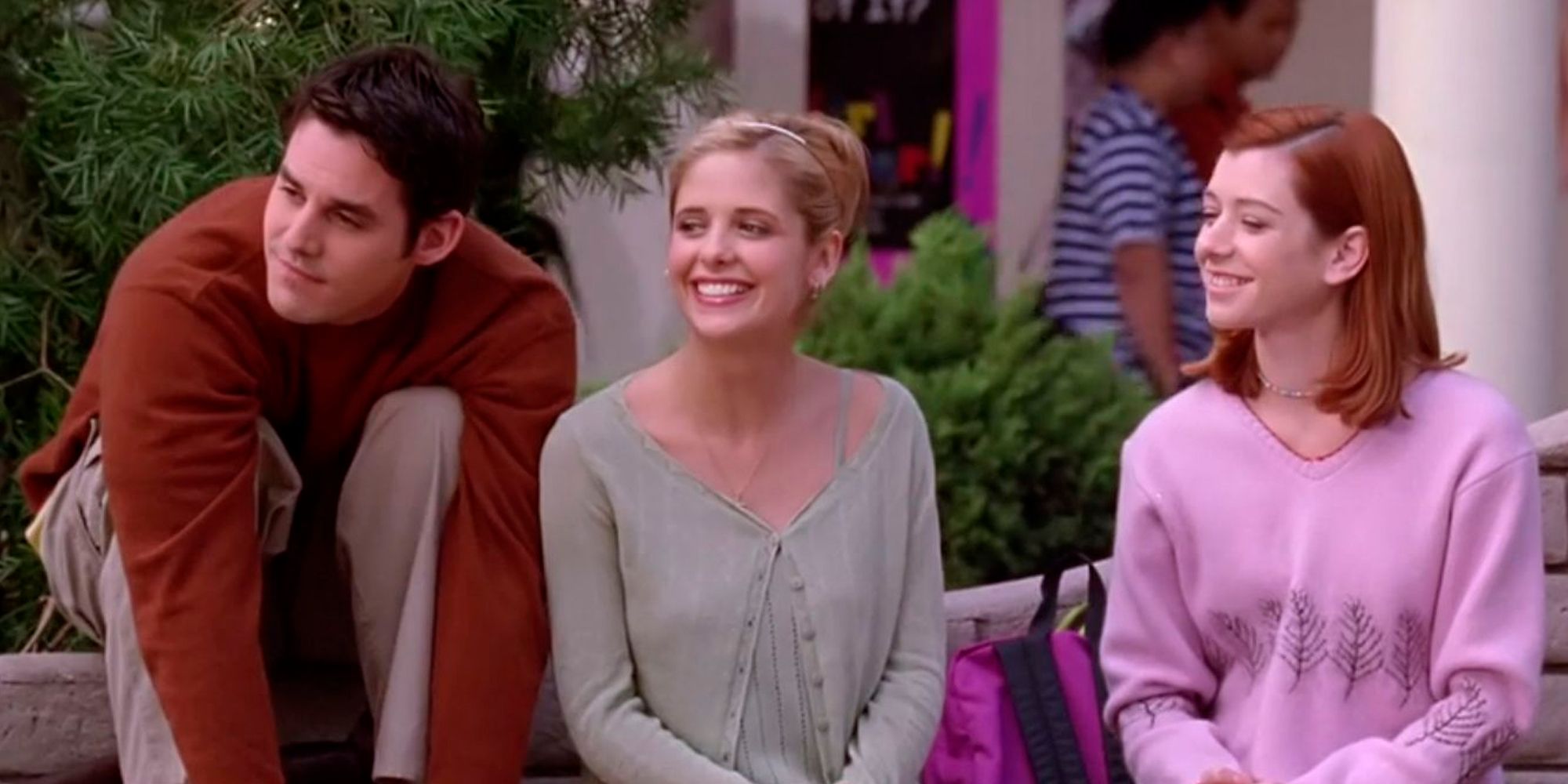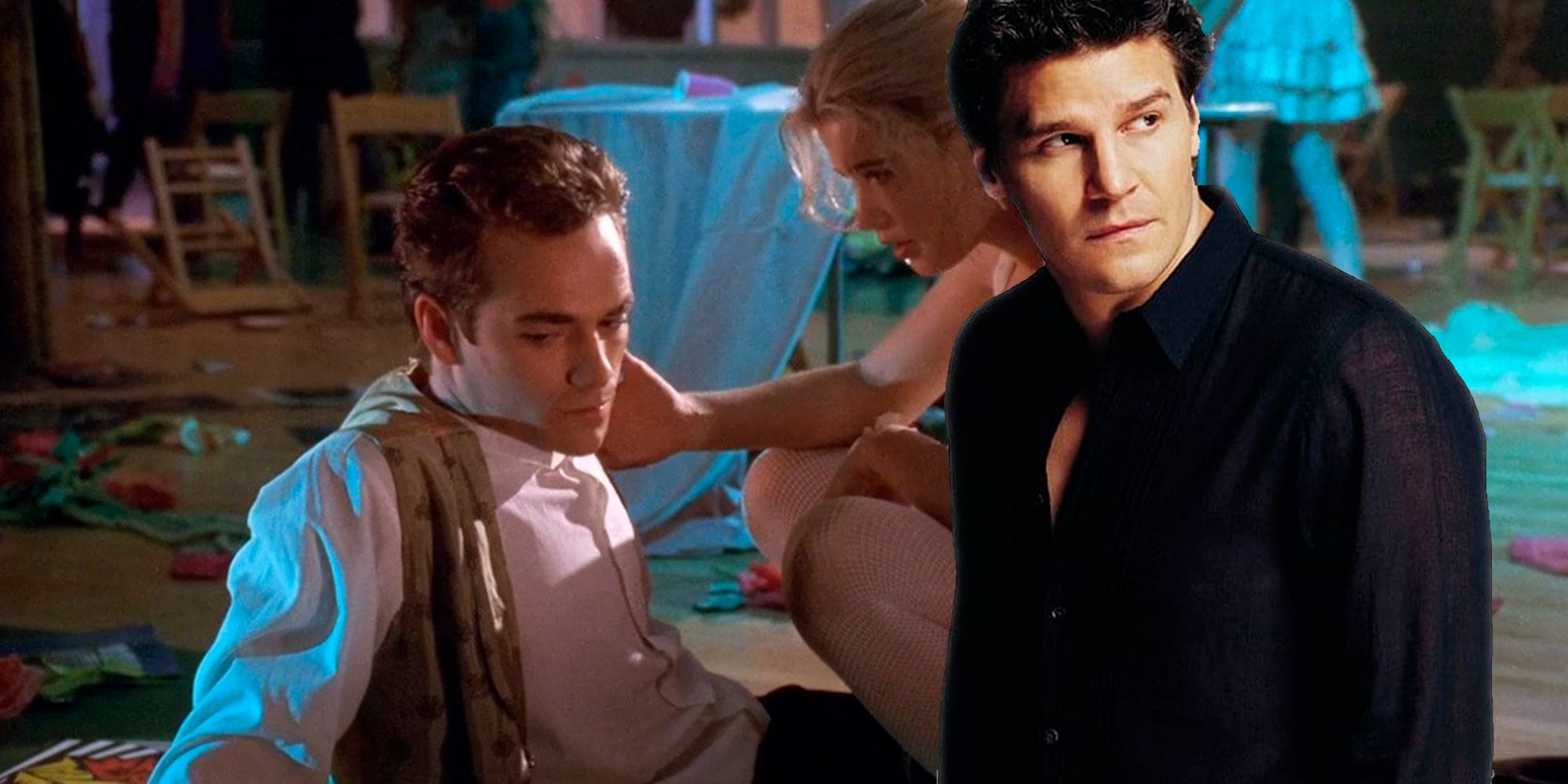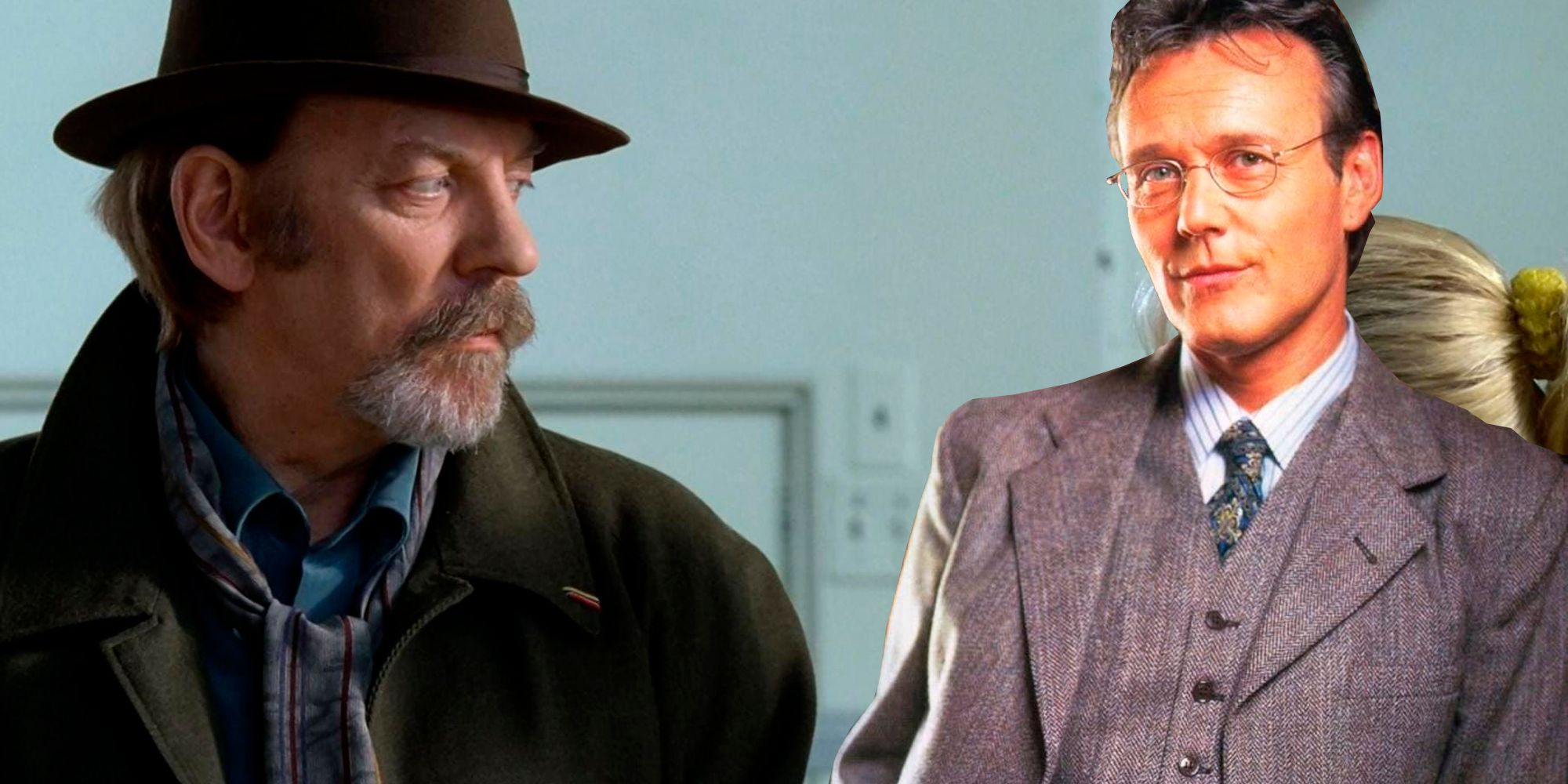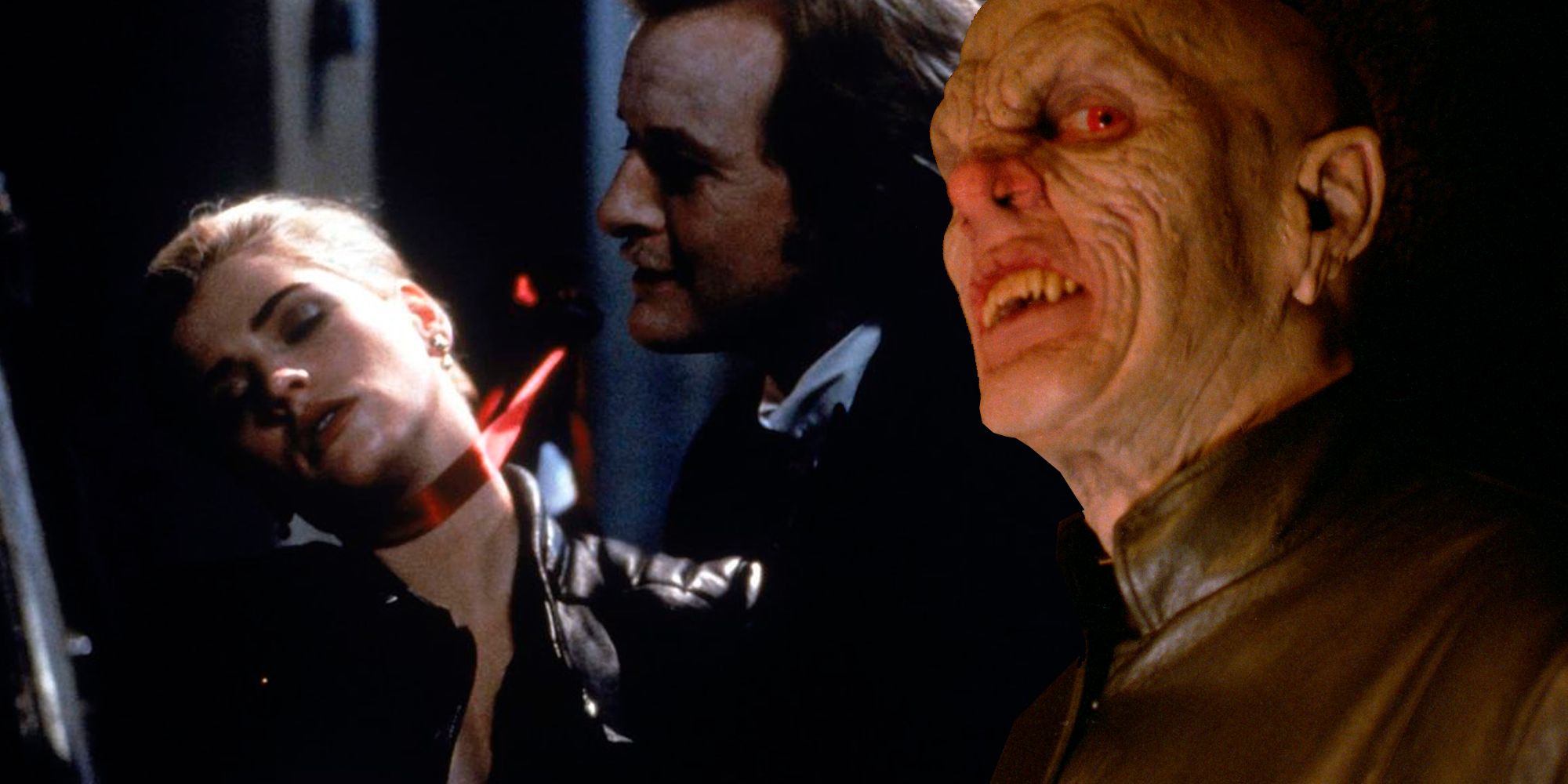The 1992 Buffy the Vampire Slayer movie served as the springboard for Joss Whedon's 1997 TV series, but the show made some significant changes to the source material. Before Buffy slashed her way into television, she was on the big screen dating Luke Perry and being played by Kristy Swanson. More Beverly Hills Ninja than Supernatural, the movie doesn’t even attempt at balancing its camp with the same dose of depth the show would eventually achieve. Instead, what audiences got in the early 90s almost doomed the franchise for good.
Fortunately, creator Joss Whedon got a second chance to bring Buffy’s story to audiences, and he didn’t let that chance go to waste. When Buffy re-appeared on television, things had changed. The core of the story remained the same, with the Slayer as its central figure, but the world around her had a different tone. While Whedon’s signature banter was still present in the dialogue, the rest of the show could move to a darker place than the movie, both literally and figuratively—the TV show takes place in the fictional Sunnydale while the film is set in Los Angeles.
The movie is a testament to how even good ideas might turn bad with poor execution, but it also demonstrates the limitations of telling a story in 90 minutes as opposed to longer television seasons. The TV version of Buffy the Vampire Slayer lasted seven seasons and spanned dozens of comic books, which ended in 2018. When a show has a bad episode, it has the opportunity to win back viewers with another storyline or a better episode down the line. Movies have no such option. Many fans might want to forget the 1992 movie altogether, but looking back, it’s interesting to know what changed and why those changes worked to the show's benefit.
Sunnydale vs. Los Angeles
In Buffy the Vampire Slayer's pilot episode, Buffy and her mother leave Los Angeles to move to Sunnydale. Changing the setting to the fictional Sunnydale as opposed to a real city might seem like a minor difference, but it allowed the show to abandon all pretense of realism. Sunnydale could be as sunny or as dark as the show needed without worrying about real-life locations or implications. The town got an entirely original and mystical backstory that fitted perfectly with the show. Buffy’s hometown is also smaller and more isolated than LA, helping the audience to buy into the more low-budget sets that a television show had to use.
The Scooby Gang vs. Mean Girls
In the 1992 movie, Buffy is friends with three quintessential "valley girls". Entirely forgettable, these characters were a bundle of stereotypes without any depth to them. Once Buffy’s life becomes complicated, they turn on her. Meanwhile, the Scooby Gang allowed the show to explore different points of view and personalities. Xander, Cordelia, and Willow were a mix of jock, nerd, and cheerleader, but they weren’t clichés. They had their own lives and problems to deal with, which meant new storylines and different perspectives to bolster Buffy’s adventures. While she was out saving the world, they could explore their sexualities, relationships, heartbreaks, and insecurities. Their loyalty to Buffy was also incredibly important to the show. The dynamic of the Scooby Gang became a classic staple of the series.
Pike vs. Angel
Luke Perry earned his status as a 1990s teen heartthrob. He starred in the popular teen drama Beverly Hills, 90210, and his fame shaped the Buffy the Vampire Slayer movie’s marketing. He was seen as major draw to audiences, and his character—Pike—is probably one of the best parts of a terribly cheesy movie. He’s a bad boy mixed with aspects of a supportive boyfriend. Considering Buffy’s partners in the show, Pike is probably her best romantic relationship.
Being the perfect balance between hot and sweet is not a good receipt for a serialized TV series. If he had appeared in the show, Buffy’s love life would have turned boring pretty quickly. Perhaps realizing this, the show gives audiences Angel instead. Brooding and mysterious, Angel was intriguing enough to keep viewers interested throughout the first season. He also expanded the world of vampires and ended up with his own spin-off series, Angel. His relationship with Buffy was the perfect metaphor for insecurities and sex, and made for one of the most memorable arcs in season 2.
Pike’s supportive view of Buffy’s powers and mission, a rarity for the time, would later appear in her relationships with Angel but also Spike once he got his soul back. So while Pike didn’t feature in the TV show, his influence was still felt.
Merrick vs. Giles
It’s not a secret that Joss Whedon hated Donald Sutherland’s portrayal of Buffy’s first Watcher. Merrick is a humorless man who doesn’t fit with the comedic tone of the movie. His relationship with Buffy is short, and his death is underwhelming. While Giles can be as serious as Merrick, he was witty and charming when he wants to be. His role as mentor and father figure was much more developed in the television show. Instead of dying to save Buffy as Merrick did in the movie, he allows her to fight her own battles and learns to respect her strengths. In many ways, Giles was the character Merrick was meant to be in the movie. Once Buffy grows up, Giles takes a more background role, but nevertheless, he remained a core component of the show. If he had died early like Merrick, Buffy’s journey from high school cheerleader to a hero could’ve been less exciting and emotional.
The Master vs. Lothos
A good horror story needs a great villain. Unfortunately, Lothos was pretty terrible. Not only were his design and clothing terribly generic, but the comedic tone of the movie also made him into a joke instead of a real threat. Compared to The Master, he looks like a regular nobody. The Master, the Big Bad of season 1, is more intimidating in every way. His demonic appearance is a homage to the classic movie Nosferatu, and he acts like a proper predator.
The final fight between Buffy and each villain is very different. The movie version is silly and lacks any real tension, ending with Buffy using hair spray as a flamethrower to burn him. Like Lothos, The Master can hypnotize people, but unlike the movie version, he actually succeeds in using it to kill Buffy—another memorable moment of the show. Long before Game of Thrones was chopping its main character’s heads, Buffy the Vampire Slayer took risks no other series had at the time. Buffy’s first defeat at the hands of The Master means their final showdown feels more intense and rewarding because we want to see her triumph after losing so badly.
Not everything about Lothos was discarded. His backstory of killing multiple Slayers eventually was reused for Spike. The bleached-blond vampire made better use of it, and his history with the Slayers was especially effective during the season 6 of the show.

